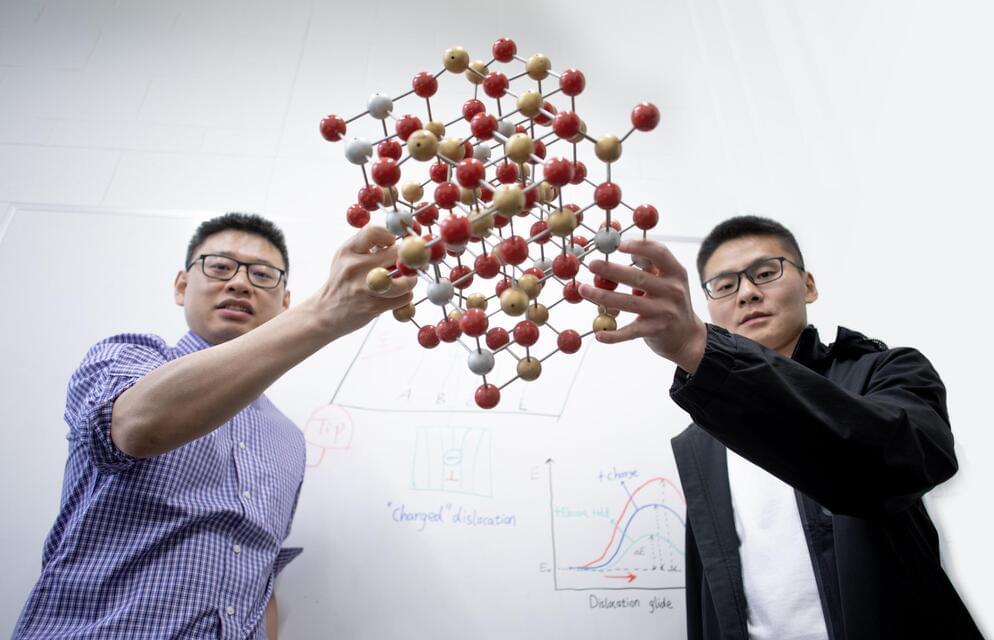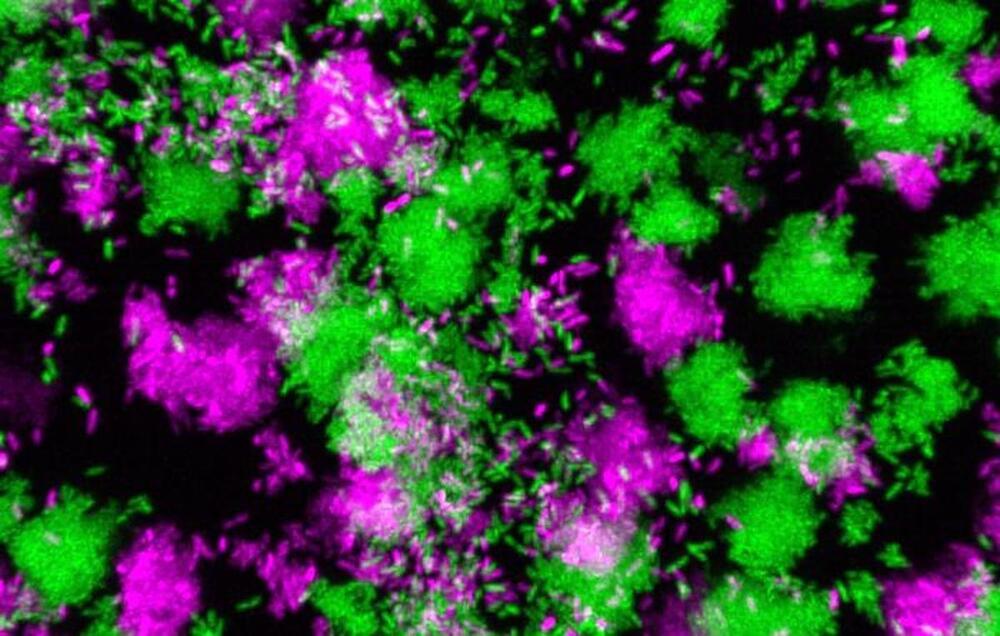Jun 22, 2023
Dutch archeologists uncover ‘Stonehenge of the Netherlands’
Posted by Shubham Ghosh Roy in category: futurism
Digs around the ‘open-air sanctuary’ started in 2017, but the results have only just been made public.
Digs around the ‘open-air sanctuary’ started in 2017, but the results have only just been made public.

An international team of researchers, led by University of Toronto Engineering Professor Yu Zou, is using electric fields to control the motion of material defects. This work has important implications for improving the properties and manufacturing processes of typically brittle ionic and covalent crystals, including semiconductors—a crystalline material that is a central component of electronic chips used for computers and other modern devices.
In a new study published in Nature Materials, researchers from University of Toronto Engineering, Dalhousie University, Iowa State University and Peking University, present real-time observations of dislocation motion in a single-crystalline zinc sulfide that was controlled using an external electric field.
Continue reading “Using electric fields to control the movement of defects in crystals” »
A fascinating eVTOL project is about to come out of stealth, showcasing a “breakthrough HyperDrive propulsion technology” that MagLev Aero claims is “dramatically more quiet, efficient, safe, sustainable and emotionally appealing to the mass market.”
Representatives from the Boston-based company have made their way to the Paris Air Show, where they’re preparing to reveal a very different approach to electric vertical lift aircraft, drawing on the magnetic levitation technology used in high-speed trains.
What we appear to have here is an annular lift fan arrangement. The aircraft’s cabin appears to be surrounded by a huge ring-shaped duct, into which at least one large-diameter, many-bladed fan is mounted.
Tesla is an interested buyer of a small Germany-based wireless charging startup following the automaker’s indications that it might launch its own EV wireless charger.
Several companies have been working on wireless charging for electric vehicles in recent years, but the technology has never taken off.
There are several issues with it. For example, it’s not as efficient as charging with a cable – though the technology has been closing the gap in recent years. It’s also more expensive, as you generally have to embed a charging pad securely in the ground instead of just mounting a charger on the wall.
Making the yogurt of the future requires a cast of 21st-century helpers: machine learning, gut science and even a mysterious artificial stomach.
At a new Danone facility near Paris, researchers feed dollops of yogurt into globular glass vessels and plastic tubes designed to mimic the human gut. Once the bacteria inside show they can survive the digestive juices, artificial intelligence is put to work to probe their potential health benefits.
To consumers bombarded with claims about the supposed power of probiotics, the goal may sound familiar: souped-up yogurt. But the owner of Activia and Actimel is betting technology can yield answers on which friendly bacteria work best and why, giving its products a scientific edge at a time when revenue is lagging and consumers are growing wary of processed food.

Infection is a constant risk. Any germs that make it past the body’s barriers, like the skin, can cause illness if the immune system does not respond properly and efficiently. Most people can easily fight off common bacteria that could be pathogenic, but people with weaker or compromised immune systems have a greater risk of infection. For the immunocompromised, bacteria like Pseudomonas aeruginosa that are everywhere in the environment can start to grow in different parts of the body, including the lungs; if this occurs, a chronic and even lifelong infection can arise. If bacteria that cause these chronic infections move to the bloodstream, they can become far more serious and even deadly. Scientists are still learning about how bacteria are able to make the transition.
New work has provided insight into how P. aeruginosa can change from causing one type of infection to another. This study used human samples to reveal a biomarker that indicates when this transition has taken place, in the form of a small RNA generated by the bacterium. The findings have been reported in Nature.
Ants were just as accurate as cancer-sniffing dogs. Better yet, they could be trained in minutes rather than months.
We may have already found evidence of an evolving, dynamic kind of dark energy, in the form of the radiation emitted when the first stars appeared in the universe.
Fusion energy is basically just smashing things together to make energy. Grossly oversimplified? Yes, but still accurate. First Light Fusion in the UK has a unique approach to fusion energy that takes that “smashing things together” to another level. I had a chance to see their facility first hand and talk to them about their current progress, as well as what’s to come at their new demonstrator plant. Are privately funded companies, like First Light Fusion, the path towards our fusion energy future?
This is the second video in my “UK nuclear tour.” In my first video, I visited the UK Atomic Energy Authority’s (UKAEA) Culham Science Center, which is the hub of the UK government’s fusion research. That’s where you find the JET and MAST-U tokamaks, but what’s interesting is that the UKAEA isn’t just about publicly funded research. They’re also working with private companies, like First Light Fusion, to offer support to accelerate all kinds of approaches towards fusion energy. First Light just recently announced that they’re building Machine 4 at the Culham Science Center, but I’ll get to more on that in a bit.1
A new family of DNA elements which control the activation of certain genes known to cause a rare disease known as MSL3 syndrome in children has been identified.
The study led by researchers at the Queen Mary University of London and published in Nature Structural & Molecular Biology shines a new light on the mechanism behind this poorly understood disease, hoping that it can lead to better treatments for this and similar diseases in the future.
Mutations in the MSL3 gene are known to cause a rare disease in children called MSL3 syndrome—a newly discovered disease with only around 50 registered diagnoses worldwide, although scientists predict that more cases are currently undiagnosed.
